Default: Out-of-The-Box
The lower and upper limits of the transmitted frequency range is convincing in the default setting, because the RSB-8 is at least measured from approx. 30 Hz up to 16 to 17 KHz in the tolerance range of approx. -3 dB compared to the level at a KHz. However, the bass and height increases are approx. +6 or +9 dB in relation to the one-KHz mark with zero dB already bad baths-like.
But you can use the subwoofer, whose separation frequency at approx. 125 to 150 Hz, even manually re-control, which then ends up with an almost linear course of 30 to approx. 3 KHz allowed. In sum, however, the possible gradients within the subwoofer control range are great and actually nothing you would expect from such a small combination. Compliment and thumbs up!
The heights, on the other hand, cannot be regulated and in many situations, especially with high-quality sources and music playback, it simply becomes too much and sounds over-present to pointed. Almost perfect discodiscount for Kevin-Klaus mainstreamers, but nothing that sounds really natural. In movies and games, however, this setup can still be tolerated. And since it is supposed to be a soundbar for home cinema in the end, all gold ears now have a temporary break.
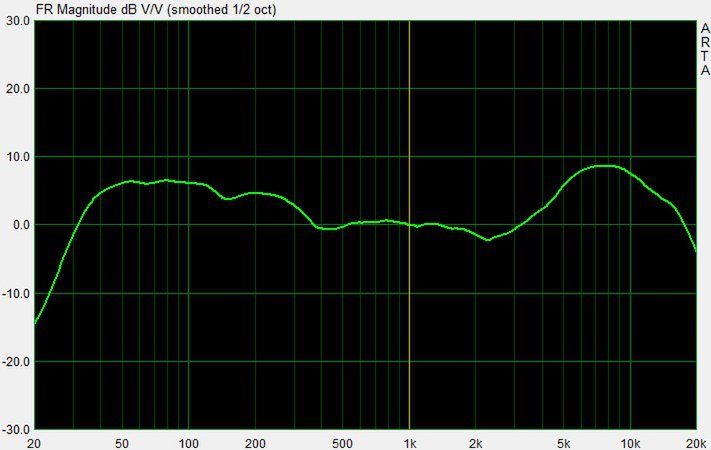 Klipsch RSB-8 Soundbar – Default settings
Klipsch RSB-8 Soundbar – Default settings
With the RSB-14, the ear is already heavier, which can be easily understood by the frequency curve. The subwoofer goes a bit lower with the measured -3dB at 28 Hz (as well as more level-resistant) and also the heights end with the -3dB specified as a tolerance value only at approx. 21 KHz, if the one-KHz reading with normalized zero dB is used.
But what lies in between not only looks weird, it also sounds something like that. The dent in the lower middle at 400 Hz kills the basic frequency of many instruments and the female voices, which sets small hole at 3.5 KHz, as with the RSB-8, in the speech intelligibility at the upper end slightly the knife, because also the timbre of many sources gets a slight blow away. The result is a somewhat muddy and not difarinionable reproduction, as well as a decreasing comprehensibility in many sources (mass scenes in films, choral and orchestral works, etc.), especially with the RSB-14.
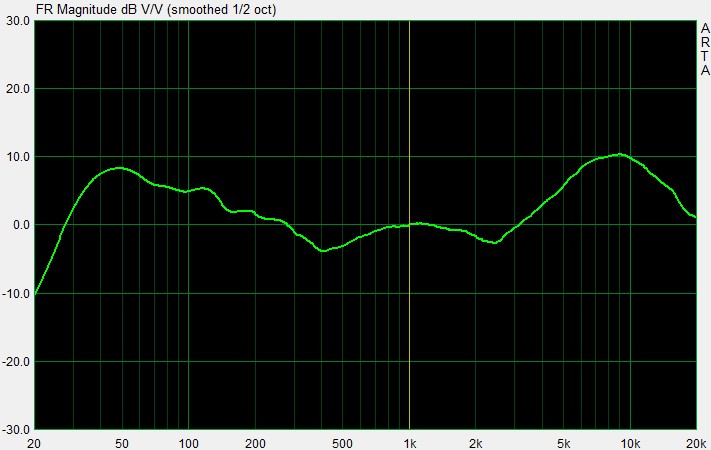 Klipsch RSB-14 Soundbar – Default settings
Klipsch RSB-14 Soundbar – Default settings
Surround mode
The surround mode does not change anything at first or hardly anything about the frequency curve, but at the base width of the stereo playback. In addition, there are various phase shifts and added effects trimmed to greater spatiality. In addition, the overall level of the RSB-8 increases by approx. 14 dB, which is not really desirable.
If the system is already operated just below the audible distortions, they are suddenly used when switching. It also doesn't sound really more spatial, just louder and a little more reverberating.
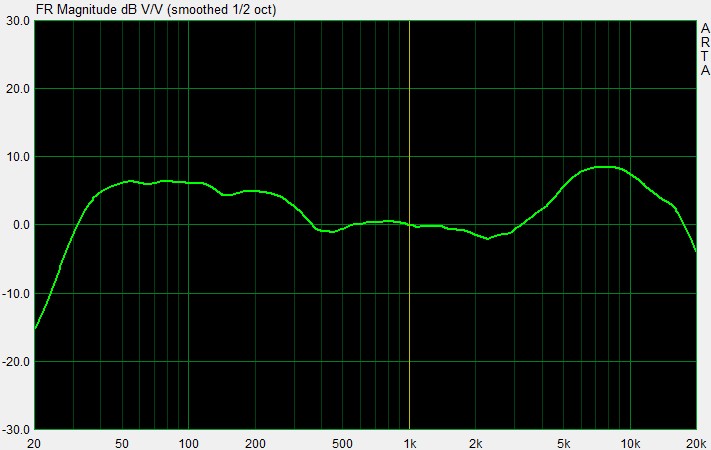 Klipsch RSB-8 Soundbar – Surround Mode
Klipsch RSB-8 Soundbar – Surround Mode
With the RSB-14, there are still approx. 7.4 dB level increase at almost identical frequency curve. One can rather live with this and strangely, the spatial impression does not rise into the grandiose, but the speech intelligibility a little, after all. Otherwise, the same applies as for the RSB-8. Lots of button for little effect.
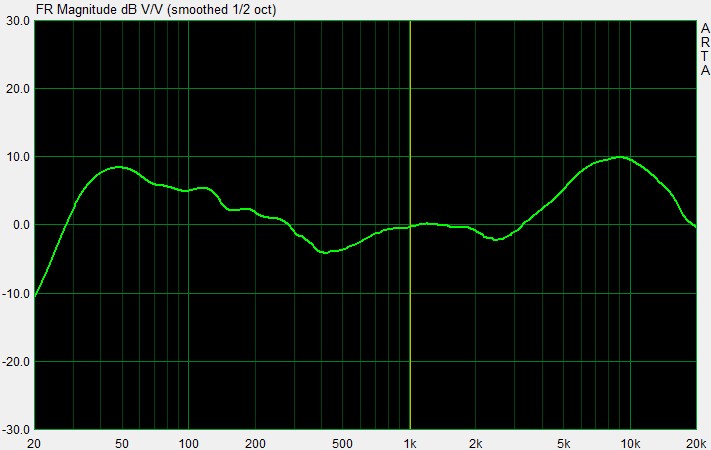 Klipsch RSB-14 Soundbar – Surround Mode
Klipsch RSB-14 Soundbar – Surround Mode
Night mode
The night mode is balm for neighboring ears, because the subwoofer is completely (RSB-8), respectively almost completely (RSB-14).
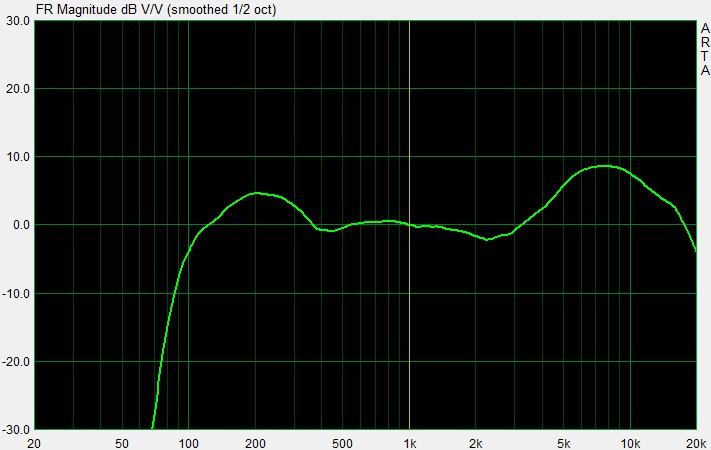 Klipsch RSB-8 Soundbar – Night Mode
Klipsch RSB-8 Soundbar – Night Mode
While the volume level of the RSB-8 changes only minimally, the RSB-14 lowers the level by a whopping 13.7 dB.
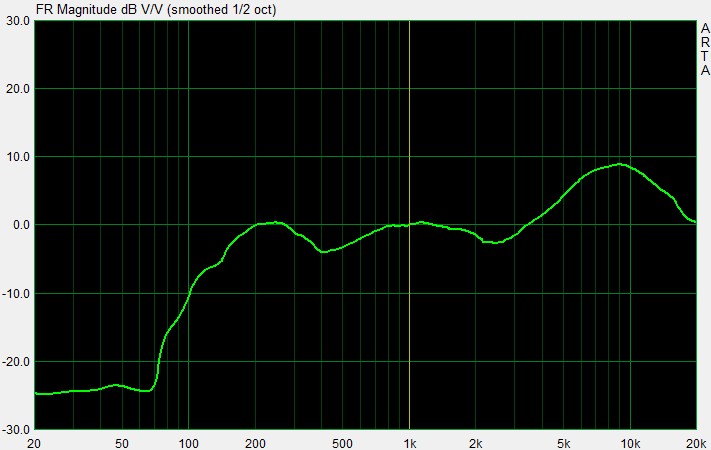 Klipsch RSB-14 Soundbar – Night Mode
Klipsch RSB-14 Soundbar – Night Mode
Dialog mode
The dialog mode is almost a halved night mode and in all cases also sounds subjectively perceived bad (or is actually superfluous), so we just left it behind. Even if Klipsch advertises with an increased speech intelligibility – it sounds only different suboptimal, but not more expedient.
Without subwoofer
The measurements without a subwoofer now show the frequency curve of the soundbar alone. The soundbar shows below the 150 Hz limit a sharply sloping curve, which is based on the active filter and the physical limits of the installed chassis.
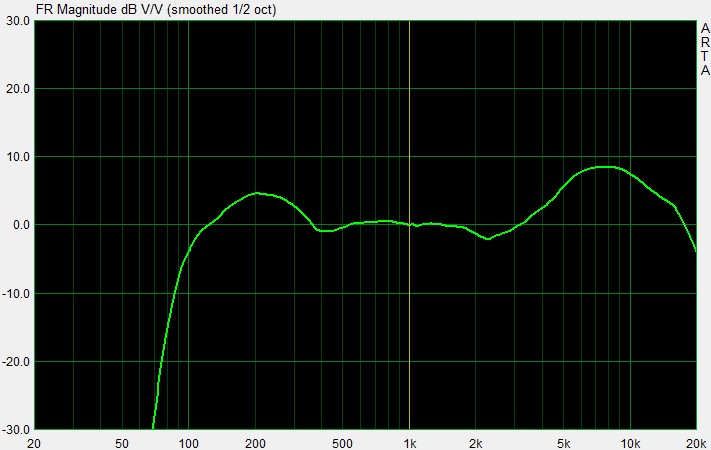 Klipsch RSB-8 Soundbar – Without subwoofer
Klipsch RSB-8 Soundbar – Without subwoofer
The curve of the RSB-14 is very similar in this case too, but is slightly different from the night mode
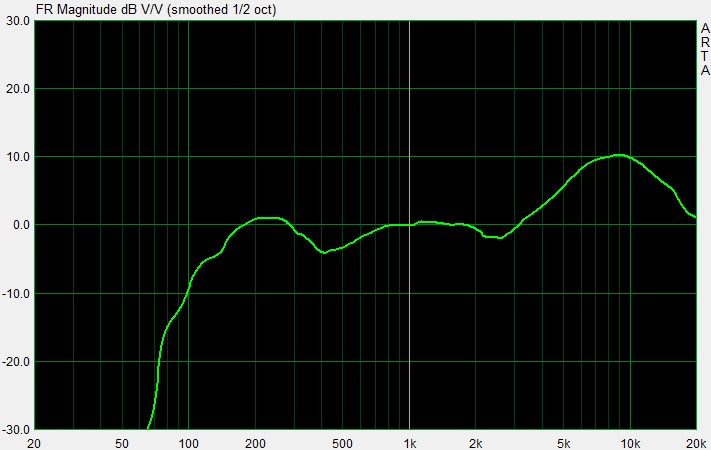 Klipsch RSB-14 Soundbar – Without subwoofer
Klipsch RSB-14 Soundbar – Without subwoofer
Sound assessment
Deeply whimpering effect track (Dolby material) and low bass (music playback) are just as present as the largest area of the upper middle and the entire high-frequency range. Explosions, shots, helicopters, wind and waves have easy play – the human language unfortunately not quite. Now such soundbars are also intended for the domestic TV and it fits exactly for that. You can also listen to music with it, but virtuosic sounds, probably also due to the design, not really.
Of course, you don't get a big stage, even if there is a wingspan of up to 1.2 meters (RSB-14) and the almost 1.02 meters of the RSB-8 are perfectly fine. The base width is still simply too small. The surround mode doesn't help either, which spoils everything rather than widens the playback acoustically.
The downmix of real Dolby material, on the other hand, works quite well. The center track is a bit more concise than the two front channels, which mainly benefits the mostly weakening language. The Rear content is all in all acceptable, although also a little too concise.
If Klipsch writes that the parts can be noisy, then that's not even a lie. All data, whether the level data or the measured frequency range, are not PR bubbles, but could be fully confirmed in our laboratory. God knows this is not a given and therefore a real plus.
Only if we are honest: a really good 5.1 or 7.1 home cinema system, especially with full-range speakers in the front and a high-performance center, will be at the top of the air, but for home use, the RSB-8. With the RSB-14, the neighbor gets already neat bass pushed through the walls.
On the desktop, the RSB-8 in particular can score significantly, as you are almost already sitting in the near field. Here the maximum level is enough in any case, only the audible, gentle noise without any one-player is a small criticism point. With the RSB-14, this degenerates into an oscillating chirping over the much louder background noise compared to the RSB-8 – so it is definitely not for the close range.

































Kommentieren